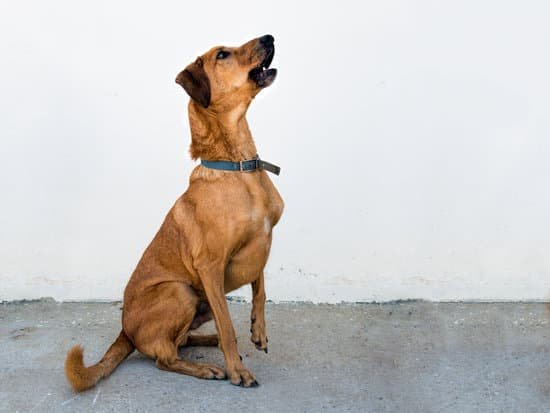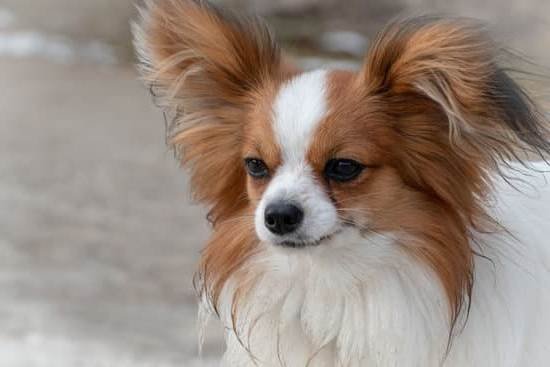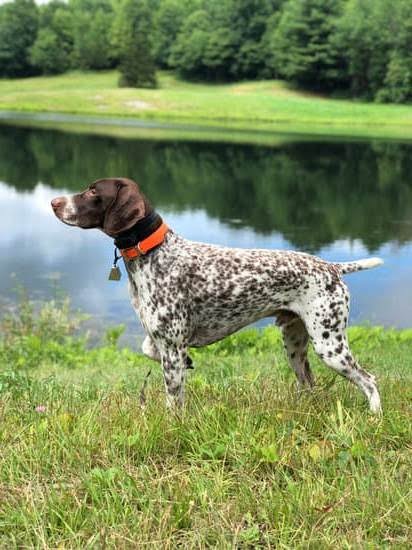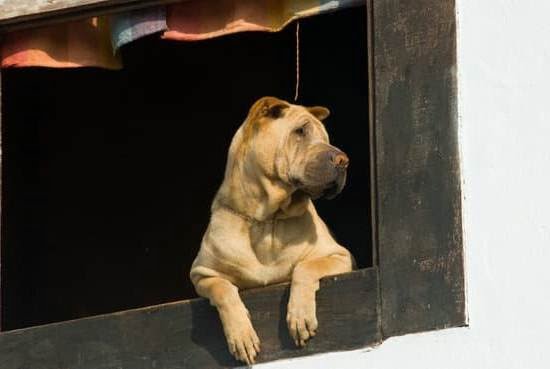Are you wondering, “how do I train my dog to hunt pheasants?” Pheasant hunting can be an exhilarating and rewarding experience for both you and your canine companion. However, achieving success in this endeavor requires strategic training and preparation. In this article, we will discuss the essential steps to train your dog for pheasant hunting, from choosing the right breed to advanced techniques and troubleshooting common challenges.
Before delving into the specifics of training your dog to hunt pheasants, it is crucial to understand the basics of pheasant hunting. This includes familiarizing yourself with the behavior and habitat of pheasants, as well as the fundamental skills required for a successful hunt. By having a thorough understanding of these aspects, you can tailor your training approach to effectively prepare your dog for the task at hand.
Choosing the right breed for pheasant hunting is a critical decision that can significantly impact your training efforts and overall success in the field. Different breeds exhibit varying strengths and characteristics that make them more suitable for pheasant hunting.
It is important to carefully consider factors such as temperament, energy levels, and natural hunting instincts when selecting a breed for this purpose. Once you have chosen a suitable breed, building a strong foundation with basic obedience training is essential before progressing to more advanced skills specific to pheasant hunting.
Choosing the Right Breed for Pheasant Hunting
When it comes to pheasant hunting, choosing the right breed of dog is crucial for a successful and enjoyable hunting experience. Different breeds have different strengths and abilities when it comes to hunting, so it’s important to consider these factors when selecting a dog for pheasant hunting.
Here are some popular breeds known for their prowess in pheasant hunting:
- German Shorthaired Pointer: Known for their versatility, endurance, and keen sense of smell, German Shorthaired Pointers are excellent all-around hunting dogs.
- Labrador Retriever: With their gentle temperament and strong retrieving instincts, Labs are great companions for pheasant hunting and are also adept at retrieving downed birds.
- English Springer Spaniel: These compact and energetic dogs excel in flushing out birds from the dense cover, making them great partners for pheasant hunters.
When choosing a breed for pheasant hunting, it’s important to consider the specific terrain and conditions where you’ll be hunting. Additionally, factor in the dog’s temperament, energy level, and trainability. Each breed has its own unique characteristics that may make them more suitable for certain types of pheasant hunting.
Ultimately, the key is to choose a breed that will complement your hunting style and provide a positive experience for both you and your dog.
Finally, take the time to research different breeds thoroughly before making a decision. Seek out reputable breeders or rescue organizations to find the perfect hunting companion that will not only enhance your pheasant hunting experience but also become a beloved member of your family.
Building a Strong Foundation With Basic Obedience Training
Basic Obedience Commands
Prior to delving into specific hunting training, it is crucial to ensure that your dog has a strong grasp of basic obedience commands such as sit, stay, come, and heel. These commands lay the groundwork for effective communication between you and your dog during hunting expeditions.
Consistency and Positive Reinforcement
Consistency is key when it comes to obedience training. It is important to set clear expectations for your dog and consistently reinforce these commands in various environments to ensure their compliance. Utilizing positive reinforcement techniques such as treats, praise, and playtime can motivate your dog to perform these commands reliably.
Patience and Persistence
Obedience training requires patience and persistence. Dogs may not grasp obedience commands immediately, so it’s crucial to remain patient and continue practicing until they fully understand and execute these commands consistently.
By building a strong foundation through basic obedience training, you are setting the stage for successful pheasant hunting training. It establishes a solid relationship built on trust and clear communication between you and your dog, which is crucial for safe and effective hunting practices.
Introducing Scent and Tracking Training for Pheasants
When training your dog to hunt pheasants, it is crucial to introduce scent and tracking training early on in the process. Pheasants have a distinct smell that dogs need to be able to recognize in order to effectively track and hunt them. One effective method for introducing scent training is to use pheasant scent dummies or wings. By familiarizing your dog with the scent of pheasants, you are helping them develop their tracking abilities.
In addition to scent training, it is important to incorporate tracking exercises into your dog’s training routine. This involves creating trails with pheasant scent and encouraging your dog to follow the trail using their sense of smell.
This not only enhances their tracking skills but also helps them learn how to stay focused on the task at hand. The combination of scent and tracking training will provide your dog with the necessary skills to effectively hunt pheasants in the field.
Another key aspect of introducing scent and tracking training for pheasants is consistency. Training sessions should be conducted regularly to reinforce the skills learned. As your dog becomes more proficient in picking up scents and tracking, you can gradually increase the difficulty level by creating longer trails or adding distractions along the way. By consistently practicing scent and tracking training, you are setting a solid foundation for successful pheasant hunting with your dog.
| Training Method | Description |
|---|---|
| Scent Training | Using pheasant scent dummies or wings to familiarize the dog with the smell of pheasants. |
| Tracking Exercises | Creating trails with pheasant scent and encouraging the dog to follow using their sense of smell. |
| Consistency | Regular practice sessions for reinforcing skills learned and gradually increasing difficulty level. |
Incorporating Retriever Training for Pheasant Hunting
Choosing the Right Retrieving Techniques
When training your dog to hunt pheasants, it is crucial to incorporate retriever training into their routine. Retrievers are especially valuable in pheasant hunting due to their ability to locate and retrieve downed birds. One effective technique to incorporate into their training is force-fetch training, which teaches your dog to fetch and deliver objects on command. This can be a challenging technique, so it is important to start with basic retrieving skills before moving on to force-fetch training.
Implementing Water Retrieval Training
Pheasants often take flight over water, and having a retriever that is comfortable retrieving birds from water can be a valuable asset in pheasant hunting. Incorporating water-retrieval training into your dog’s regimen can help prepare them for real-life hunting scenarios.
Start by introducing your dog to shallow waters and gradually increase the depth as they become more confident. Use retrieval dummies or toys during these exercises to simulate the experience of retrieving a downed bird from the water.
Introducing Blind Retrieves
Blind retrieves are an essential skill for any hunting dog, including those used for pheasant hunting. This involves sending your dog to retrieve an object they have not seen fall or been directed towards. To train your dog in blind retrieves, start by placing a dummy or toy in an area that is out of sight for your dog.
Use commands and hand signals to guide them towards the hidden object. This will help prepare them for situations where they must rely solely on your instructions when hunting pheasants.
As you incorporate retriever training into your dog’s overall pheasant hunting preparation, remember that patience and consistency are key. Each dog will progress at their own pace, so it is important not to rush through the process. By following these techniques and providing ample practice opportunities, you can effectively train your dog for successful pheasant hunting experiences.
Simulating Field Conditions for Realistic Training
When it comes to training your dog to hunt pheasants, it’s important to create realistic scenarios to prepare them for actual field conditions. One effective way to do this is by incorporating simulated hunting environments into your training sessions.
This can include introducing your dog to different terrains such as tall grass, fields, and wooded areas, which are common pheasant habitats. By exposing your dog to these environments, they can become familiar with the sights, sounds, and smells they will encounter while hunting pheasants.
In addition to terrain, it’s crucial to simulate the presence of live birds during training. You can use bird launchers or remote-controlled devices that mimic the movements of a flushed pheasant to help your dog become accustomed to the excitement and adrenaline of a real hunting situation.
The goal is to gradually expose your dog to scenarios that closely resemble actual hunting conditions so that they are well-prepared when it’s time to hunt pheasants in the wild.
Another important aspect of simulating field conditions for realistic training is incorporating distractions and obstacles that are commonly encountered during pheasant hunting. This can include loud noises, other animals, and challenging terrain features. By slowly introducing these elements into your dog’s training regimen, you can help them build confidence and problem-solving skills that will be invaluable when they are out in the field.
| Training Technique | Description |
|---|---|
| Simulated Hunting Environments | Incorporate terrain like tall grass and wooded areas into training sessions to familiarize dogs with pheasant habitats. |
| Introducing Live Bird Simulations | Use bird launchers or remote-controlled devices to mimic the movements of flushed pheasants for realistic training. |
| Incorporating Distractions and Obstacles | Gradually introduce loud noises, other animals, and challenging terrain features into training for improved problem-solving skills. |
Advanced Techniques for Pheasant Hunting Training
Once your dog has mastered the basics of pheasant hunting, you can begin to incorporate some advanced techniques to further enhance their skills in the field. These techniques will help your dog become a more efficient and effective hunter, making the hunting experience more enjoyable for both you and your furry companion.
Some advanced techniques for pheasant hunting training include:
1. Pattern Training: This technique involves teaching your dog to search the field in a specific pattern, allowing them to cover more ground efficiently. You can use visual cues or verbal commands to direct your dog’s search pattern, ensuring that they thoroughly explore the hunting area.
2. Honing Retrieval Skills: In pheasant hunting, it’s crucial for your dog to have strong retrieval skills, as they will be responsible for retrieving downed birds. Advanced retrieval training can involve simulating real hunting scenarios and introducing distractions to mimic the challenges of a pheasant hunt.
3. Developing Marking Abilities: Marking is the skill of a dog remembering where a bird fell after it has been shot. Training marking abilities involves teaching your dog to focus on the location of downed birds and retrieve them efficiently.
By incorporating these advanced techniques into your pheasant hunting training regimen, you can further develop your dog’s abilities and create a well-rounded and skilled hunting partner. Additionally, consistent practice and patience are key when implementing these advanced techniques – remember that every dog learns at their own pace, so be encouraging and supportive throughout the training process.
Troubleshooting Common Challenges in Pheasant Hunting Training
When it comes to training your dog to hunt pheasants, there are common challenges that many hunters and their furry companions face. One of the most common issues is a lack of focus or distractions during the training process. This can happen when your dog encounters new scents or sounds in the field, causing them to lose sight of their task.
To address this challenge, it’s important to gradually expose your dog to different environments and stimuli during training sessions. This will help your dog become more accustomed to these distractions and stay focused on the hunt.
Another common challenge in pheasant hunting training is disobedience or refusal to follow commands. This often occurs when a dog has not fully mastered basic obedience training before moving on to hunting-specific tasks.
To troubleshoot this challenge, it’s essential to go back to basic obedience training and reinforce commands such as sit, stay, come, and heel. By building a strong foundation with basic obedience training, you can ensure that your dog is more responsive and obedient during pheasant hunting training.
Additionally, some dogs may struggle with retrieving the shot pheasant or other game during hunting expeditions. This can be a frustrating challenge for both the hunter and the dog. To address this issue, retriever training should be incorporated into the overall pheasant hunting training program.
This involves teaching your dog how to retrieve objects, including dummies or decoys that resemble pheasants. By practicing this skill regularly and using positive reinforcement techniques, you can help your dog become a proficient retriever during actual hunts.
Overall, understanding and addressing these common challenges in pheasant hunting training is essential for success in the field. With patience, consistency, and proper training techniques, you can overcome these obstacles and enjoy a rewarding experience with your well-trained hunting companion.
Safety Precautions and Responsible Hunting Practices
In conclusion, training your dog to hunt pheasants requires a combination of understanding the basics of upland game hunting, choosing the right breed, and building a strong foundation with obedience training. It is also essential to introduce scent and tracking training, as well as retriever training for successful pheasant hunting.
Simulating field conditions for realistic training and incorporating advanced techniques are crucial for preparing your dog for actual hunting situations. Additionally, being aware of common challenges in pheasant hunting training and troubleshooting them will contribute to a more successful outcome.
Ultimately, safety precautions and responsible hunting practices are paramount when training your dog to hunt pheasants. This includes but is not limited to wearing appropriate gear, obtaining necessary permits, identifying your target before shooting, and being considerate of other hunters in the area.
By following these guidelines, you can ensure an enjoyable and ethical experience while out in the field. And always remember if you have any questions such as “how do I train my dog to hunt pheasants“, seek help from professional trainers or experienced hunters when needed.
Frequently Asked Questions
What Is the Easiest Dog to Train for Pheasant Hunting?
The easiest dog to train for pheasant hunting is typically the Labrador Retriever. Their intelligence, eagerness to please, and natural retrieving instincts make them highly trainable for this specific type of hunting.
How Long Does It Take to Train a Pheasant Dog?
The time it takes to train a pheasant dog can vary depending on factors such as the dog’s breed, age, and previous training experience. On average, it can take several months to a year to fully train a dog for pheasant hunting.
What Is the Best Pheasant Hunting Dog?
The best pheasant hunting dog is often considered to be the German Shorthaired Pointer. They are known for their versatility, endurance, and excellent scenting ability, making them well-suited for locating and flushing out pheasants during hunts.

Welcome to the blog! I am a professional dog trainer and have been working with dogs for many years. In this blog, I will be discussing various topics related to dog training, including tips, tricks, and advice. I hope you find this information helpful and informative. Thanks for reading!





